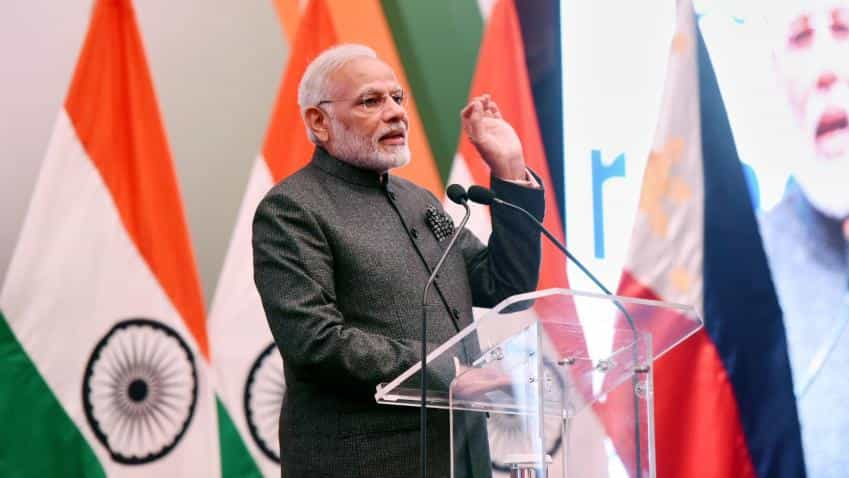India Inc. on Thursday said the rise in the second quarter (Q2) GDP numbers showed signs of economic recovery.
"Growth numbers are in sync with the expectations and re-affirm that signs of recovery are in sight," said Pankaj Patel, President of Ficci.
"The performance of industrial sector has noted an improvement after dropping to the lowest in almost five years in the previous quarter... It is encouraging to see government`s approach towards resolving GST related issues."
Patel said that the Reserve Bank`s upcoming monetary policy review next week "will be a perfect timing to give another shot to boost the sentiment".
"The government should look at further consolidating its reform agenda in the forthcoming Union Budget 2018-19 to be announced two months from now to give further boost to investment," Patel added.
Commenting on the Q2 GDP data CII`s Director General Chandrajit Banerjee said: "The revival of the GDP growth print reinforces the perception that the economy is on a robust recovery phase and the short-term disruptions caused by demonetisation and GST are behind us."
"What is encouraging is that manufacturing has emerged as a key driver of growth indicating that firms have started restocking and recovery is taking shape. Gross fixed capital formation has also picked up from last year`s lacklustre pace."
"Going forward, CII believes that economic performance would be better in the second half as companies move to execute projects on the back of improved demand," Banerjee added.
According to Assocham`s Secretary General D.S. Rawat, the 6.3 per cent growth in the GDP for the second quarter has come "as a big relief to India Inc, in the backdrop of quite subdued performance of the previous quarter".
"Manufacturing has emerged as bright spot at seven per cent but agriculture remains an area of concern with mere 1.7 per cent in the second quarter against 2.3 per cent in the previous quarter. Setbacks in the agri performance can have a cascading impact on the consumer inflation," Rawat said in a statement.
Ratings agency CRISIL`s research arm pointed out that the rise in GDP growth signalled the fading impact of demonetisation and destocking that preluded the implementation of GST.
"We expect the growth to pick up to 7.6 per cent in the second half of this fiscal, helped by low-base effect of the second half of fiscal 2017," the ratings agency said in a statement.
"However, GST implementation glitches, on-going changes in the GST structure, and a possible cut in capex due to rising fiscal stress may limit upside in the subsequent quarters."
Lead Economist with Deloitte India Anis Chakravarty said the latest set of numbers showed improved performance of manufacturing that could have possibly been affected by implementation of the GST from July 1, 2017.
"High frequency indicators such as auto sales suggest that demand has recovered since then and manufacturing could see better numbers in the quarters ahead," Chakravarty said.
"A pick up in mining activity was also clearly visible and bodes well for the economy. The agriculture sector seems to have underperformed given the normal rainfall and kharif output."
Official data on Thursday showed that a rise in the manufacturing sector`s output pushed India`s growth rate higher to 6.3 per cent during the second quarter of 2017-18.
On a sequential basis, India`s GDP growth for Q2 of the current fiscal went up to 6.3 per cent, from 5.7 per cent reported during the first quarter of 2017-18.
The Central Statistics Office`s (CSO) data disclosed that GDP for Q2 stood at Rs 31.66 lakh crore, or a growth of 6.3 per cent.
08:36 AM IST







 Stock market this week: These factors to drive Indian equity markets
Stock market this week: These factors to drive Indian equity markets When will Indian economy hit $5 trillion mark? Railway Minister Piyush Goyal explains
When will Indian economy hit $5 trillion mark? Railway Minister Piyush Goyal explains Debt market to remain under pressure in April
Debt market to remain under pressure in April India set to grow at 7.2 pc this fiscal on rising consumption: ADB
India set to grow at 7.2 pc this fiscal on rising consumption: ADB India can't achieve 9-10% GDP growth without revolution in farm sector, says Niti Aayog CEO Amitabh Kant
India can't achieve 9-10% GDP growth without revolution in farm sector, says Niti Aayog CEO Amitabh Kant